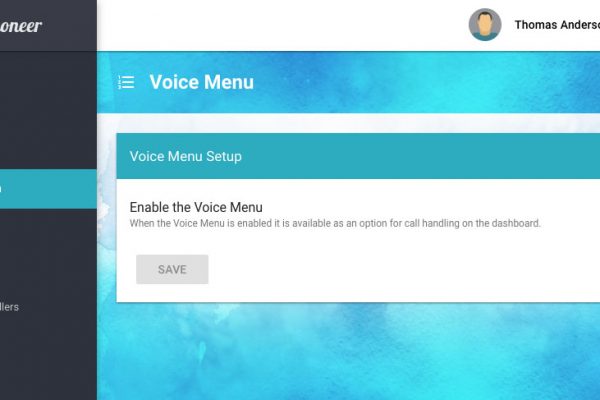A voice menu (sometimes called an “automated attendant“ or auto-attendant) allows your callers to route their own calls by selecting options from their phone keypad. Here are some best practices to get the most out of your voice menu and make it a pleasant experience for your callers.
1. Minimise the number of options
An industry rule of thumb is to have no more than 5 options per level in your menu. Telephoneer supports a maximum of five options and one level, so we’re already helping you with this one!
Keep a clear distinction between options and avoid overlapping or too-similar options which might be confusing for callers. Sales and Support are fine for example, but think twice about both Support and Troubleshooting options.
Remember, the caller has to hold the menu options in their head while they listen to your message and most people can only manage 3 – 7 items in working memory.
2. List the most important options first
Important generally means “most frequently used” unless you have some kind of emergency line that is called rarely but needs to be up-front just in case.
3. Keep it short and sweet
The longer your message is, the more likely it is to bore your caller. Ideally keep your introductory greeting to a welcome with your business’ name and perhaps tag line. Avoid overloading callers with sales information or promotional items unless you really have to, and keeping it as brief as possible if you do.
When listing your menu options keep them as concise as possible while still sounding friendly and approachable. Something like “Please press 1 for sales, 2 for support, or 3 for all other enquiries” is preferable to “Please press 1 to speak to the sales department, please press 2 to speak to the support department or please press 3 for all other enquiries”.
4. Sound professional
Your voice menu may be a potential customer’s first impression of your business – you want it to be a good one. Unless you’ve been blessed with a “voice for radio” consider having your messages recorded by professional voice talent. If we can assist with this, drop us a note with your requirements and we can give you a quote.
5. Stay relevant
Don’t run your voice menu 24/7 unless you’re answering calls 24/7 as well. Giving customers an option to speak to sales that always goes to voicemail after hours doesn’t play well. Set the telephoneer schedule to run your voice menu during normal working hours and set up a dedicated “after hours” voice mailbox. The after-hours voicemail greeting should include your normal working hours.
If you’re going to be closed for a public holiday that isn’t happening nationally (e.g. Ekka in Brisbane or the different labor days in various states), consider a specific ‘after-hours’ voicemail greeting for that holiday to let your customers know why you’re closed.
Spice up your messages from time to time with appropriate seasonal greetings.
6. Always provide an option to talk to a human
Some people just want to talk to human as soon as possible without punching buttons on their phone and it’s common practice to reserve option zero (0) for this purpose. Your customers may well expect to be able to hit the 0 key and shortcut the menu.
Of course you can add an “option zero” to your voice menu without mentioning it in your menu announcement, making it available as kind of a hidden menu item.
It’s also good practice to make the voice menu’s default option go to a human as well, so if the caller does nothing they still get connected to someone.
Hopefully you’ll find these tips useful as you craft a voice menu that serves both you and your customers well!

